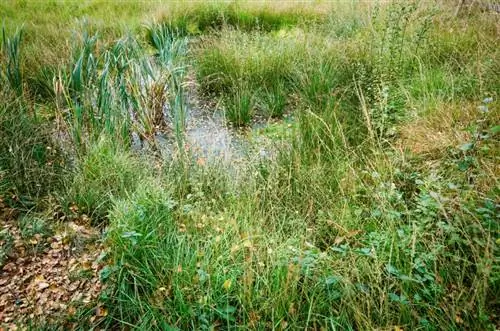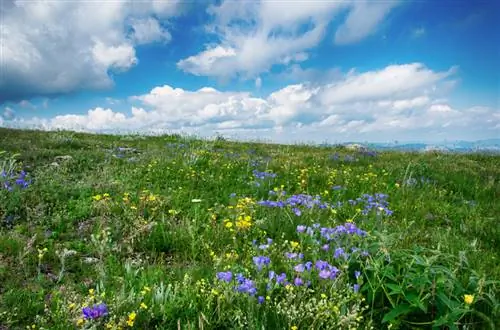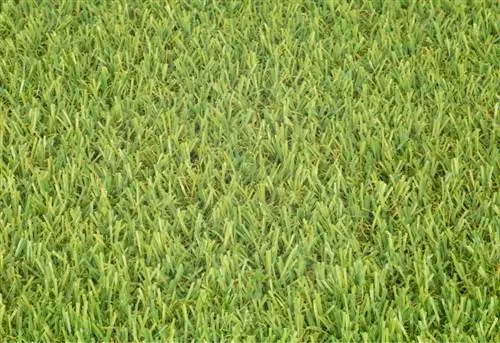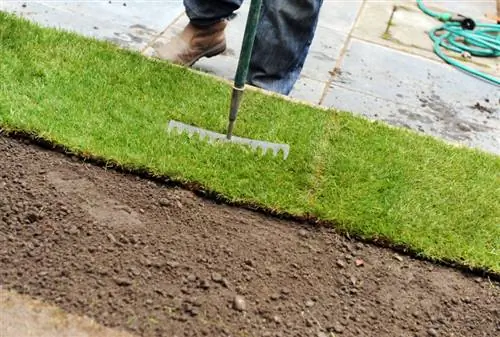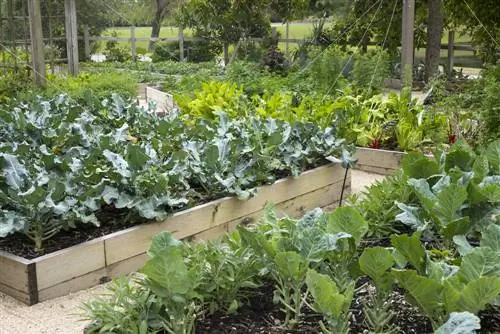- Author admin [email protected].
- Public 2023-12-16 16:46.
- Last modified 2025-01-23 11:20.
Until about 600 years ago - i.e. in Europe's deep Middle Ages - the German landscape consisted largely of forests, floodplain forests and wet meadows. These natural biotopes were eventually displaced by the ever-increasing human population, because they required arable and pasture land to secure food supply. Even today, the very species-rich wet meadows are highly endangered, as they are falling victim to the straightening of rivers as well as drainage and conversion into arable and pasture areas.
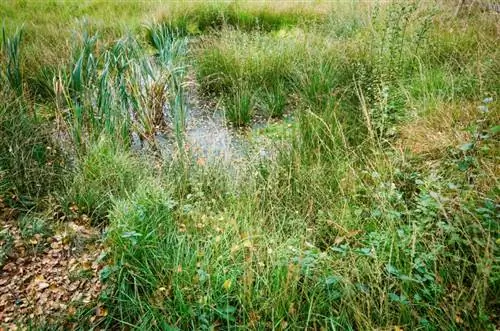
What is a wet meadow and what plants grow there?
Wet meadows are species-rich biotopes that occur near bodies of water and in depressions. They were created through agricultural use and are maintained by human hands. Typical wet meadow plants are marsh marigolds, pipe grasses and umbels.
What is a wet meadow?
Wet meadows are mainly found near streams or rivers, on lakes and in depressions where the ground is moist to wet - the soils of these very species-rich biotopes are used to occasional flooding. They emerged from the Middle Ages through agricultural use as mowing and grazing areas and still require a caring, human hand today. Otherwise, this meadow, which is rather overgrown with herbaceous plants, would quickly be populated by tall perennials and bushes and quickly turn into a riparian forest. Agriculturally, wet meadows are primarily used for hay production, but are rather unsuitable for grazing, etc. They are also referred to synonymously as swamp meadows, although the vegetation can vary greatly depending on the level of soil moisture.
Typical wet meadow plants
Depending on the nature of the soil and the resulting vegetation, three different types of wet meadows are distinguished:
1. Marsh marigold meadows
The strong yellow blooming marsh marigold thrives primarily on nutrient-rich soils, which can also dry out in summer due to a lower groundwater level. In addition to the marsh marigold (C altha palustris), this agriculturally usable wet meadow contains plants such as
- Troll Flower (Trollius europaeus)
- Great meadow button (Sanguisorba officinalis)
- Meadow foamweed (Cardamine pratensis)
- Cuckoo Campion (Lychnis flos-cuculi)
- as well as the broad-leaved orchid (Dactylorhiza majalis), a native orchid species.
This type of wet meadow, if used for agricultural purposes, should be mowed and fertilized regularly.
2. Pipe grass meadows
In contrast to the usually lushly flowering marsh marigold meadows, which thrive on nutrient-rich soils, typical pipe grass meadows can be found primarily on rather nutrient-poor, alternately moist soils. Possible locations include drained moors. The vegetation is heavily represented by various species of pipe grass as well as flowers such as
- Swallowroot gentian (Gentiana asclepiadea)
- Bloodroot (Potentilla erecta)
- Siberian iris (Iris sibirica)
- or devil's bite (Succisa pratensis)
embossed. Pipe grass meadows should, if possible, not be fertilized, otherwise the plants characteristic of this type will decline.
3. Brenndoldenwiesen
In Germany, this type of wet meadow can be found primarily in the river valleys of the large rivers Elbe, Havel and Oder. The typical vegetation consists of
- Swamp umbel (Cnidium dubium)
- Meadow Silge (Silaum silaus)
- God's Grace Herb (Gratiola officinalis)
- or the marsh pea (Lathyrus palustris)
marked. Burning umbel meadows are also known as stream valley meadows and must tolerate alternating flooding and drying out.
Create a wet meadow
Of course you can also create a wet meadow yourself. A naturally moist location is ideal for such a project, although it is usually drained. On normally dry garden soil, however, you must proceed as follows:
- First remove the top layer of soil along with the short-cut plants.
- Dig a shallow depression or choose a location in a depression.
- Fill this hollow with loam or clay and then - depending on the type of meadow - nutrient-rich soil or a mixture of soil and sand.
- Spread a special seed mix for wet meadows.
Tips & Tricks
Wet meadows must be mown regularly - at least twice a year - so that the diversity of species is maintained and the area does not become overgrown with bushes. Mowing is particularly important in early autumn.

